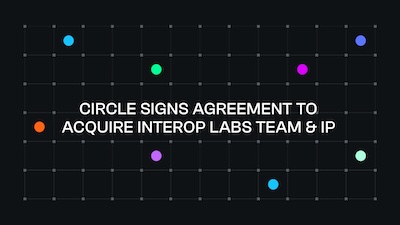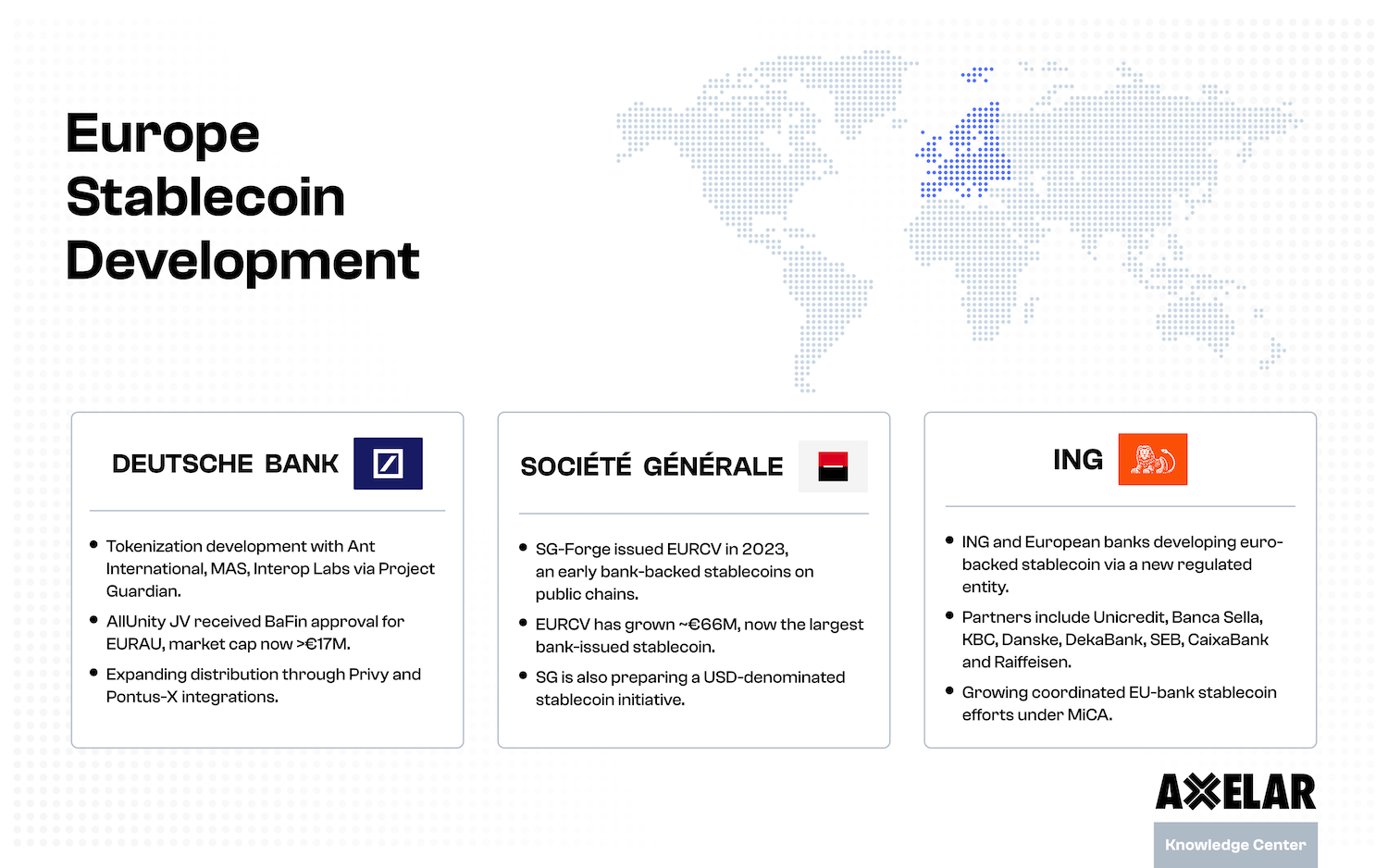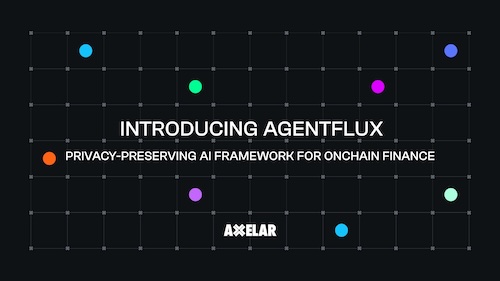🛣️ The Axelar Network Roadmap for 2024 🛣️
Table of Contents


Axelar is trusted by the top DeFi applications (think Frax and Lido), the top DEXs (think dYdX and Uniswap), the top wallets (think MetaMask, Trust Wallet and blockchain.com) and enterprises leading integration of Web3 (think Mastercard, Microsoft and Onyx by J.P. Morgan).
Following major network advancements in 2023, Axelar begins 2024 as the only true multichain platform: secure, scalable and programmable. In the coming year, the advantages of building with Axelar network will expand.
Stay up to speed as 2024 unfolds!
👉 Subscribe to the main newsletter for general updates or subscribe to the developer newsletter for developer-specific content.
👉 Join Axelar Community Telegram.
2024 Roadmap Tldr
- Axelar Virtual Machine becomes a platform for open-source tools to enable chain-agnostic development, running on decentralized cross-chain infrastructure.
- Permissionless connections for arbitrary chains via Interchain Amplifier, taking potential network effects out to the 100s of blockchains in the Ethereum L2verse.
- Interchain Tokens go beyond bridges, extending native fungibility and custom functionality across all connected chains.
- A gas-burning mechanism is on the AXL token governance roadmap, with the potential to turn the network deflationary, further securing Axelar network.
- Integrating diverse consensus approaches, including Solana, Stellar, and Move-based chains like Aptos and Sui.
- A gas-pricing overhaul will improve the accuracy of services that estimate cross-chain gas fees over Axelar network.
Axelar Virtual Machine
Interchain Tokens and Interchain Amplifier are both considered part of the Axelar Virtual Machine (AVM).
Powered by Cosmwasm, the Axelar Virtual Machine turns interoperability into a programmable layer. It enables developers to write smart contracts on Axelar, while scaling their interchain deployments and “programming” the cross-chain networking layer.
When the AVM is fully deployed, it will encompass Interchain Token Service (ITS), Interchain Amplifier and Interchain Maestro – a Kubernetes for Web3 that will unlock the composability of Web3 for all developers, making it simple to build across multiple chains with dApps that integrate network effects like Lego blocks, permissionlessly.
👉 Read more about composable network effects in a recent CoinDesk op-ed.
👉 Read the blog post introducing the Axelar Virtual Machine.
Interchain Amplifier
Axelar network already integrates more blockchains than any other – and unlike pairwise networks, new connections instantly link to all existing connected chains. This is why Axelar is referred to as a scalable cross-chain platform.
Interchain Amplifier will exponentially increase Axelar’s scalability advantage.
Sergey Gorbunov, CEO of Axelar Inc. (the initial developer of Axelar network) summarized the effect of Interchain Amplifier in a request for comments on Axelar’s governance forum:
Instead of relying on the protocol developers to add support for new chains to the consensus logic, anyone can instantiate a set of smart contracts on the network to connect to a new chain. There will also be a universal “router” smart contract that, upon acceptance by the governance, will allow routing traffic to any of the other N interconnection ecosystems.
This is similar to what the Axelar network has today at the network layer, but the envisaged model to select validators is a bit different [to avoid having to build a secondary economic zone]:
- A validator wishing to join the active set to support a new chain enters a governance process, in which AXL token holders vote to approve the validator.
- Once approved, the validator would receive rewards that are initially bootstrapped through the depositing of AXL into a pool by certain entities, potentially foundations.
- When a connection generates enough traffic, a further governance process can be initiated for fees to be turned on and distributed to validators.
Permissionless new-chain connections means Web3 developers can route transactions through new security paths as they emerge, a concept known as future-proof interoperability.
Interchain Tokens
In 2023, the Interchain Token Service (ITS) went out on testnet. This powerful product suite for developers supports Interchain Tokens that preserve cross-chain fungibility and custom functionality. ITS extends tokens cross-chain, preserving native qualities while allowing teams to easily manage supply and features.
The programmability of Axelar network is what makes ITS possible. Managing token supply across multiple chains is complex, requiring custom code for each new deployment. ITS is a set of smart contract developer tools that automate these tasks, abstracting away the complexity of chain-agnostic dApp development.
This smart-contract logic runs in an open-source cross-chain environment on decentralized infrastructure, making ITS a truly transparent and trustless solution for developers building for users on multiple chains.
ITS is now available on mainnet in a beta release. Read more & get started building in the Axelar docs.
Tokenomics and Network Enhancements
The AXL token is a core component of what makes Axelar secure, enabling inflationary rewards to the dynamic set of validators that secure the network. That set of validators numbers 75 at the time of this post, greater than any cross-chain provider and establishing Axelar as the most secure and decentralized cross-chain network.
With this security approach, Axelar has transferred over $7 billion in cross-chain volume in its first two years of mainnet operation.
Recently, in preparation to scale Axelar to hundreds or thousands of chains, Axelar Foundation proposed new tokenomics that would:
- Reduce inflationary rewards per external-chain connection.
- Implement a mechanism to send AXL transaction fees (gas) to a burn address, instead of distributing them to tokenholders.

The first step has has already been implemented, reducing inflationary rewards to 0.3% from 0.75% per external chain. The second step, sending gas fees to a burn address, will be formally proposed some time in 2024. If Axelar transaction volume continues to grow, this gas mechanism would effectively counteract an increasingly high inflation rate, leading at some point to a deflationary state of the network.
👉 Read Axelar Foundation’s request for comments on the Axelar network community governance forum.
👉 Read Messari’s summary of Axelar’s proposed new tokenomics.
Integrating diverse consensus approaches
In 2023, Axelar network expanded General Message Passing to reach all Cosmos chains, enabling applications like Sommelier that combine unique features of EVM and Cosmos ecosystems into seamless user experiences. The Sommelier implementation was discussed in a recent Bankless episode featuring Sergey Gorbunov of Axelar Inc., Zaki Manian of Sommelier and Steven Goldfeder of Offchain Labs (initial developer of Arbitrum).
In 2024, the Axelar network roadmap includes further expansion to connect additional diverse consensus approaches. Stay tuned for connections to Solana, Stellar, and Move-based chains like Aptos and Sui – among others.
Better gas pricing: towards a 100% execution guarantee
In cross-chain transactions, gas can be complicated, requiring payments in multiple tokens. For developers and users, Axelar network is designed to support services that abstract and simplify these complexities.
One component of these services is gas pricing. Currently, users can get estimates for how much they would need to pay for gas; to be on the safe side, they’re overpaying and then getting refunded. In 2024, Axelar Gas Services will replace those estimates with a fee where users will know exactly how much they need to pay to get a transaction through. No guessing, overpaying, or refunds required. This follows a rework of the Executor service, improving its reliability and stability in relaying GMP messages, once gas has been paid.
To simplify cross-chain gas for your users, read Axelar docs and learn how Axelar Gas Services abstracts the complexity in cross-chain gas payments. At a high level, learn the inputs involved in calculating a cross-chain gas payment – and how you can track cross-chain gas using Axelarscan.
Conclusion
Last year was a major leap forward for the Axelar network. (👉 Read the network year-in-review blog post for full details.)
But in some ways, 2023 can be seen as just laying the groundwork for what’s to come in 2024. Together, builders in the Axelar network ecosystem are delivering a Web3 that is scalable, programmable and secure – and easier and more powerful than anything that’s come before.
Come build with us!
👉 Subscribe to the main newsletter for general updates or subscribe to the developer newsletter for developer-specific content.


